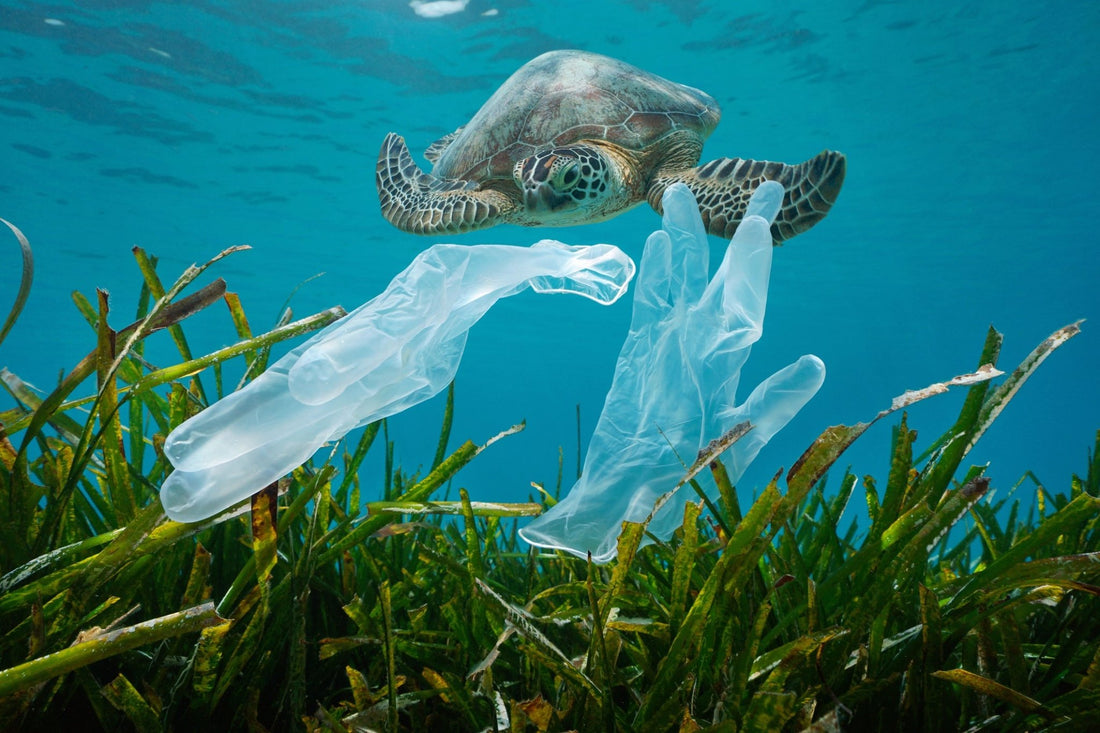
The Hidden Environmental Cost of Single-Use Medical Gloves
Share
The Silent Ecological Burden
In the realm of healthcare, hand hygiene stands as the cornerstone of infection prevention. Yet, this critical practice comes at an unforeseen environmental cost: the staggering use of single-use medical gloves. The U.S. alone witnesses the annual consumption of over 300 million gloves—a figure that truly should raise the alarm when we focus on the global impact. This silent ecological burden, born from our efforts to safeguard human health, merits a closer examination by those it serves: our dedicated healthcare professionals.
The Scale of Glove Usage in Healthcare
Worldwide healthcare institutions relentlessly strive for sterility, a mission that necessitates the annual consumption of countless medical gloves—a figure that surged amid the COVID-19 health crisis. Made from various materials like latex, nitrile, or neoprene, each glove plays an indispensable role in ensuring the safety of both patients and healthcare providers. Nonetheless, this critical usage conceals an often-overlooked price. In the United States, the healthcare sector is responsible for generating around 5 million tons of waste per annum, with a substantial fraction attributed to these single-use gloves. The cost isn't merely financial; the deeper environmental consequences are ushering in an era of ecological debt that poses a complex challenge to our current capabilities of waste management and environmental protection.
The Real Price of "Throwaway" Protection in Healthcare
In the pursuit of hygiene, disposable gloves are hailed for their convenience and the safety they provide. Yet, this throwaway culture has its price—a costly environmental aftermath that is often ignored. The full journey of these gloves, from resource-intensive beginnings to their final resting place as waste, is marred by environmental degradation. Common disposal practices like incineration and landfilling release toxins into the air, poison the earth, and seep into waterways, magnifying the healthcare sector’s environmental footprint.
Nitrile gloves are a cornerstone of modern hygiene practices, effectively safeguarding against contamination. While they are durable and provide excellent protection, their environmental impact is notable, with decomposition potentially spanning a century. This long-term breakdown process can lead to chemical release, which we need to address responsibly. Animals could mistake glove remnants for food, which is a concern for wildlife. The spike in usage during events like the COVID-19 pandemic has brought this issue into sharper focus. Recognizing this, we are prompted to consider sustainable practices and innovations in materials that could minimize environmental footprints without compromising safety. It’s an opportunity to align our health priorities with environmental stewardship.
As we continue to battle pathogens, the question looms large: Can we afford to ignore the silent, insidious spread of environmental decay we're contributing to with every glove we thoughtlessly toss aside? Disposable gloves are a symbol of convenience and safety in healthcare. However, their lifecycle—from raw material extraction to disposal—leaves behind a trail of environmental harm. Incineration and landfilling, the common disposal methods, lead to air, land, and water pollution, exacerbating the problem of medical waste.
Charting a Course for Embracing a Greener Grip: The Journey to Biodegradability
To craft a sustainable future in healthcare protection, we embark on a multi-pronged approach. Reducing glove usage where safe and feasible, enhancing recycling programs, and, critically, pioneering the pathway to biodegradable glove alternatives stand at the forefront. This journey involves rigorous research and development, with the aim of creating materials that safely return to the earth without leaving harmful residues.
Final Thoughts
In healthcare, our pledge to patient safety is paramount, yet it harmoniously coexists with our duty to environmental stewardship. By actively engaging in the development and adoption of biodegradable gloves, we take a proactive step towards diminishing our environmental footprint, all while upholding our commitment to uncompromised protection in patient care.
To learn more about highly affordable biodegradable gloves, visit BioFlexx.